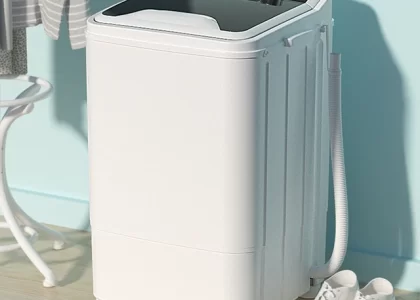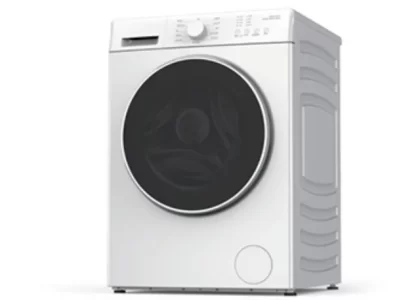 Introduction:
Introduction:
Washing machines are essential household appliances that simplify our lives by efficiently cleaning our clothes. However, just like any other electronic device, washing machines may encounter issues that can disrupt their operation. Resetting a washing machine is a simple and effective way to troubleshoot common problems and restore its functionality. In this comprehensive guide, we will provide step-by-step instructions on how to reset a washing machine, helping you resolve issues and keep your appliance running smoothly.
Several types of washing machines:
There are several types of washing machines available in the market. Here are some common types:
Top-loading washing machine:
This type of washing machine has a lid on the top and the clothes are loaded from the top. The agitator or impeller is located in the center of the drum and agitates the water and clothes to clean them. Top-loading machines are generally more affordable and have a faster washing cycle.
Front-loading washing machine:
Front-loading machines have a door on the front through which clothes are loaded. The drum rotates horizontally and lifts the clothes up and drops them back down repeatedly, known as tumbling action. Front-loading machines are known for their efficiency, gentler wash cycles, and better water and energy-saving capabilities. However, they are usually more expensive than top-loading machines.
Semi-automatic washing machine:
Semi-automatic machines have separate tubs for washing and rinsing. The washing tub requires manual intervention to transfer clothes from the washing to the rinsing tub. These machines are less automated but come at a lower price point compared to fully automatic machines. They are popular in regions with water scarcity or inconsistent water supply.
 Understanding the Need to Reset
Understanding the Need to Reset
Reasons to Reset:
Resetting a washing machine can help resolve various issues, such as unresponsive controls, error codes, or unusual behavior.
By resetting the machine, you essentially restore its default settings and clear any temporary glitches that may be interfering with its operation.
When to Reset:
Resetting may be necessary when the washing machine displays error codes or fails to start or complete a cycle.
If the machine is acting abnormally, making strange sounds, or not responding to commands, a reset may be needed.
Step-by-Step Guide to Reset a Washing Machine
Unplug the Machine:
Locate the power cord of the washing machine and unplug it from the electrical outlet.
This step is crucial for safety and ensures that the machine is completely disconnected from power.
Wait for a Few Minutes:
Allow the washing machine to sit idle for a few minutes.
This waiting period helps discharge any remaining power and allows the internal systems to reset.
Restore Power:
Firmly plug the power cord back into the electrical outlet.
Ensure that the connection is secure, and the power source is reliable.
Press the Reset Button (if available):
Some washing machine models feature a dedicated reset button on the control panel.
Look for a button labeled “Reset” and press and hold it for a few seconds.
The machine may emit a beep sound or display a confirmation message to indicate a successful reset.
Power Cycle the Machine (if necessary):
If your washing machine doesn’t have a dedicated reset button, you can power cycle it to achieve a similar effect.
After restoring power, simply turn the machine off by pressing the power button or unplugging it, and then turn it back on after a short interval.
 Additional Troubleshooting Tips
Additional Troubleshooting Tips
Consult the User Manual:
It’s beneficial to review the user manual for specific instructions on resetting your washing machine model.
The manual may provide manufacturer-recommended steps or troubleshooting guidelines tailored to your appliance.
Contact Customer Support:
If you encounter persistent issues or are unsure about resetting your washing machine, reach out to the manufacturer’s customer support.
They can provide expert assistance, troubleshoot the problem, or guide you through the reset process.
Professional Service:
If resetting the washing machine doesn’t resolve the issue, it may require professional intervention.
Contact a qualified technician or appliance repair service to diagnose and fix the problem.
 If your washing machine is not spinning or emitting a foul odor after a reset:
If your washing machine is not spinning or emitting a foul odor after a reset:
If your washing machine is not spinning or emitting a foul odor after a reset, you can try the following steps to address the issue:
Check the power supply:
Ensure that the washing machine is properly plugged in and receiving power. Check the circuit breaker and make sure it has not tripped.
Verify the door or lid is closed properly:
Many washing machines have safety mechanisms that prevent them from spinning if the door or lid is not securely closed. Make sure that the door or lid is fully closed and latched.
Check the load balance:
An unbalanced load can prevent the washing machine from spinning. If you have overloaded the machine or if the load is unevenly distributed, rearrange the clothes to distribute the weight evenly and start the cycle again.
Clean the drain pump filter:
A clogged or dirty drain pump filter can interfere with the washing machine’s ability to spin properly. Locate the filter, usually located at the bottom front of the machine, and follow the manufacturer’s instructions to clean it. This may involve removing any debris or lint that has accumulated.
Clean the machine:
If there is a foul odor, it could be due to a buildup of residue, mold, or mildew inside the washing machine. Run a hot wash cycle with a cup of white vinegar or a specific washing machine cleaner recommended by the manufacturer. This will help eliminate any unpleasant odors and remove any buildup.
Contact customer support:
If the above steps do not resolve the issue, it is recommended to consult the washing machine’s user manual or contact the manufacturer’s customer support for further assistance. They can provide specific troubleshooting steps or arrange for a technician to inspect and repair the machine if needed.
It is always important to follow the manufacturer’s instructions and safety guidelines when addressing any issues with the washing machine and to seek professional help if necessary.
 Conclusion:
Conclusion:
Resetting a washing machine is a valuable troubleshooting technique that can resolve common issues and restore its proper functioning. By following the step-by-step guide outlined in this comprehensive article, you can easily reset your washing machine and potentially avoid the need for professional assistance or costly repairs. Remember to unplug the machine, wait for a few minutes, restore power, and either press the reset button or power cycle the appliance. If problems persist, referring to the user manual, contacting customer support, or seeking professional service are advisable steps to explore. With the ability to reset your washing machine, you can effectively address minor issues and ensure your appliance continues to serve you well in long run.




